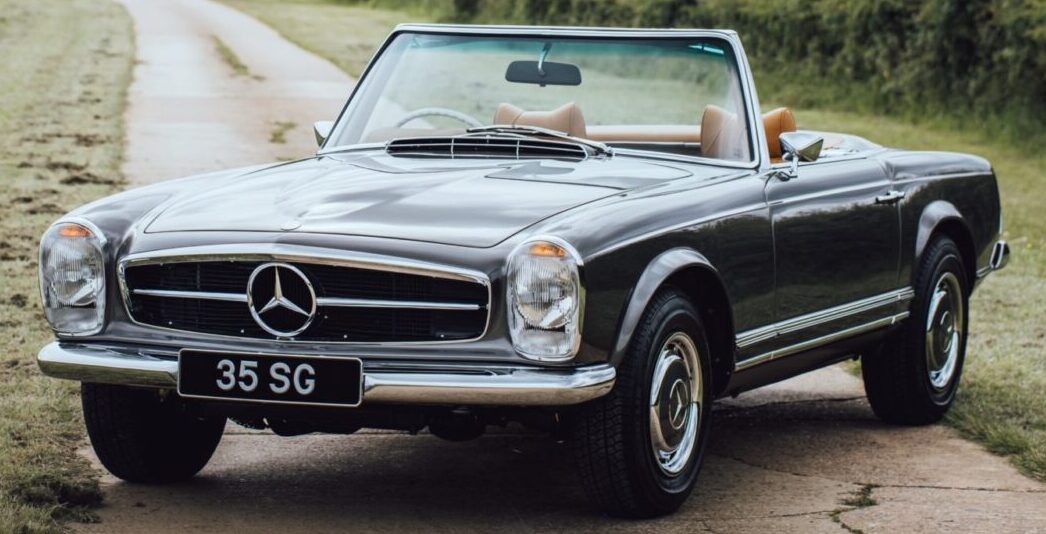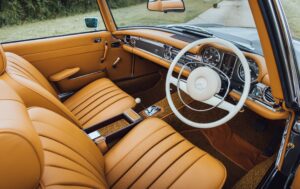Which is correct: Mercedes 280 SL or SL 280?
1. Mercedes 280 SL or SL 280: Understanding the difference
3. Mercedes 280 SL: A third-generation icon
4. SL 280: A new era of nomenclature
5. The key differences between the 280 SL and SL 280
Mercedes 280 SL or SL 280: Understanding the difference
For car enthusiasts, especially those fond of classic models, the question of whether to say “Mercedes 280 SL” or “Mercedes SL 280” often arises. This distinction might seem subtle, but it carries significant weight for those passionate about Mercedes-Benz roadsters. Both names refer to models from different eras, but what do they represent? And why does it matter how we refer to them?
The origins of the SL
To understand the importance of the SL designation, we need to go back to its roots. SL stands for Super Leicht, which translates to “super light” in English. The designation first appeared on the iconic 300 SL “Gullwing,” a car designed to dominate both road and track competitions. The name was a reflection of its lightweight construction, which was crucial for its competitive edge. Over the years, the SL moniker has evolved, becoming shorthand for Mercedes’ high-performance luxury roadsters.
Mercedes 280 SL: A third-generation icon
The Mercedes 280 SL is often referred to as the final iteration of the W113 series, also known as the “Pagoda” due to its unique concave hardtop design. Launched in 1968, the 280 SL was produced until 1971 before being replaced by the R107 series. The W113 Pagoda models were a major success in both Europe and the United States, and their popularity endures in the classic car market today.
The “280” in the name refers to the engine’s displacement — a 2.8-liter inline-six engine known as the M130. This engine was a notable improvement over its predecessors, the 230 SL and 250 SL, providing more power and performance, with a maximum output of around 170 horsepower. This made the 280 SL a more dynamic and desirable choice for driving enthusiasts, and its reputation has only grown with time. In fact, due to its combination of style, performance, and heritage, the 280 SL is often regarded as the most sought-after variant of the W113.
SL 280: A new era of nomenclature
Fast forward to 1989, when the R129 SL series was launched, replacing the R107. This marked a new chapter for Mercedes-Benz roadsters, with the introduction of a host of technological innovations and luxury features that had never been seen in a production SL before. In 1993, Mercedes-Benz made a subtle but important change to the way they named their SL models. Instead of placing the engine size before the SL designation, they reversed the order. This is where the name “SL 280” comes into play.
The SL 280 was introduced as an entry-level option within the R129 series. Initially powered by an inline-six engine, this model was later upgraded to a V6 in 1998, giving it more refinement and power. Despite this, the SL 280 remained overshadowed by more powerful versions like the SL 320 or SL 500. However, for those seeking a more affordable way into the R129 series, the SL 280 offered a balance between performance and luxury.
The key differences between the 280 SL and SL 280
At a glance, it may seem like the names “280 SL” and “SL 280” are interchangeable, but they refer to very different cars from different periods of Mercedes-Benz history.
Era of Production:
- Mercedes 280 SL (W113): Produced from 1968 to 1971, this model represents the classic, hand-crafted era of Mercedes roadsters.
- Mercedes SL 280 (R129): Produced between 1993 and 2002, this model belongs to a more modern generation, with advanced technology and more everyday usability.
Engine Configuration:
- 280 SL: Powered by the M130 2.8-liter inline-six engine, with a strong focus on sporting performance and classic roadster aesthetics.
- SL 280: Initially offered with an inline-six engine, later replaced by a V6. While refined, it didn’t deliver the same level of raw performance as its classic predecessor.
Cultural and Market Significance:
- 280 SL: The W113 Pagoda models, especially the 280 SL, are now highly coveted by collectors and classic car enthusiasts, with values soaring due to their rarity and desirability.
- SL 280: Although a well-engineered car, the SL 280 is generally less prized compared to other R129 variants, such as the SL 320 or SL 500. It is appreciated more for its role as an entry-level luxury roadster of the 1990s.
Why the name matters
Referring to a car as the “Mercedes 280 SL” or “Mercedes SL 280” is more than just semantics. It denotes not only the era in which the car was produced but also the kind of driving experience and heritage one can expect from the vehicle. The 280 SL harkens back to a time when Mercedes was focused on creating lightweight, performance-oriented roadsters with timeless designs. On the other hand, the SL 280 signifies a shift towards a more modern, luxury-driven roadster experience, with advanced features and a smoother ride.
For those passionate about Mercedes roadsters, understanding these nuances is key. Whether discussing the iconic 280 SL Pagoda or the more modern SL 280, both models play a significant role in the legacy of Mercedes-Benz.
Are you already a proud owner of a Mercedes W113 SL? If so, check out our selection of parts for this car at the following link:
https://octoclassic.com/product-category/mercedes-benz/w113
Photos sources: theslshop.com, caroladaimler.com, wallup.net











